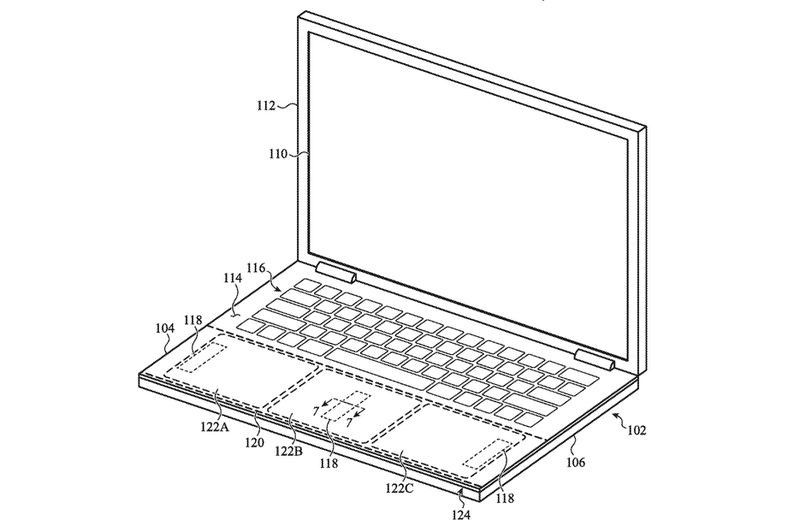Touchscreen MacBook confirmed? This patent may have revealed Apple’s big plans
Touch-tech's next steps

According to a recently published patent application by the US Patent & Trademark Office, Apple could be looking to expand its usage of haptics in future MacBook devices. The patent, titled “Laptop computing device with discrete haptic regions,” showcases the potential for future MacBook or similar electronic devices to include advanced haptic outputs across a palm rest, trackpad, and more interestingly, a touchscreen panel.
Haptic feedback isn’t a new concept for Apple, as the Force Touch trackpad has been a standard with both the MacBook and MacBook Air since 2015. However, despite Apple’s prowess regarding touch technology in its other devices, a touchscreen MacBook has yet to see the light of day. So what does this patent signal for the future of the MacBook? A MacBook Touch? A MacBook 2-in-1? Or just a more refined user experience?
Focus on the feel
The main innovation highlighted by the patent, first reported on by Patently Apple, is the inclusion of serval new haptic ‘zones’ present across the deck and screen of future MacBook devices. In the patent, Apple refers to these zones as “spatially localized haptics,” with each area having its own individual haptic actuator that will be “imperceptible outside that region.”

These “spatially localized haptics” can be found not just within the confines of the trackpad, but also across both palm rests and within the device’s touch screen. Similar to the MacBook’s current Force Touch trackpad, these zones will also feature “force sensors” that can detect pressure input and deliver varying levels of haptic response. This is likely a way to improve energy efficiency by only activating areas when they’re currently being occupied by your hand.

Practical applications for Apple’s advanced haptics aren’t fully realized in the patent. However, there is an indication that the haptics would be suited towards notifications — with a number of haptic outputs working simultaneously to provide easily distinguishable feedback to “alert a user to multiple notifications.”
MacBook Touch?
For a company that was at the forefront of ushering in touch tech, there’s been a clear reluctance from Apple to include touchscreen elements in MacBook devices. This could be due to co-founder Steve Jobs’ opinion that it was “ergonomically terrible,” or the negative reaction to the MacBook Pro’s Touch Bar.
However, things could be about to change, as further evidence exists that indicates Apple is gearing up to finally take the touch panel plunge.
Sign up to receive The Snapshot, a free special dispatch from Laptop Mag, in your inbox.

Bloomberg’s Mark Gurman reported in January of 2023 that Apple engineers are currently “actively engaged” in the process of adding touchscreens to MacBook devices — with the future MacBook Pro OLED being earmarked as the first potential candidate to receive the upgrade. The MacBook in question is likely to arrive sometime in 2026 according to display analyst Ross Young.
Of course, this patent is by no means confirmation of a touchscreen panel heading to MacBook, but it is evidence that Apple is currently thinking of ways to implement one in the future.
Outlook
Patent applications are filed all the time in the tech world. While they’re sometimes insightful to get a scope of where a company might be heading, there’s also no guarantee that any of these features will make it into a final product.
That being said, the patent’s inclusion of a touchscreen does further the claims that a MacBook Pro touchscreen model is something on the horizon, no matter how far on the horizon that may be.
Keep your eyes peeled to Laptop Mag for the latest Apple news on MacBooks, iPads, and iPhones.

Rael Hornby, potentially influenced by far too many LucasArts titles at an early age, once thought he’d grow up to be a mighty pirate. However, after several interventions with close friends and family members, you’re now much more likely to see his name attached to the bylines of tech articles. While not maintaining a double life as an aspiring writer by day and indie game dev by night, you’ll find him sat in a corner somewhere muttering to himself about microtransactions or hunting down promising indie games on Twitter.
